Cover Reveal for Pilgrimages & My Journey to the Skulker's Island
Today I have a cover to reveal and a story to tell of how I visited an Iron Age broch in North Uist.
First, the cover:
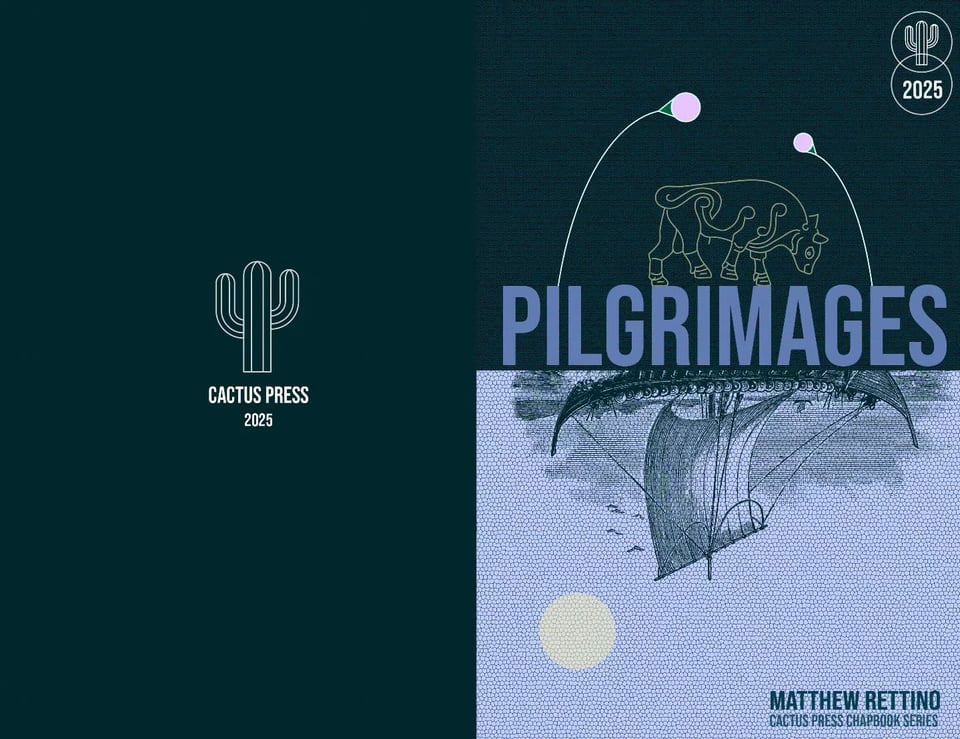
I’ve been working with my Cactus Press editors Devon Gallant and Willow Loveday Little to get my chapbook ready for the September 21st launch. After iterating designs, Devon produced this cover, which I very much approved of.
The broch I visited is Dun an Sticir in North Uist, one with a checkered past. I write about it in a haiku in Pilgrimages, but this newsletter will go into much deeper detail about its story.
I also include the usual links so you can follow my #WeirdFictionChallenge. This week is Jeffrey Ford and Stephan King.
But first, a word about Father Allan.
What I’m reading:
I recently read Father Allan: The Life and Legacy of a Hebridean Priest by Roger Hutchinson, a short biography of a Catholic priest who served the South Uist and Eriskay communities at around the turn of the twentieth century. He is known for preserving the Gaelic language and recording numerous folk songs spoken on the Western Isles. He also notably oversaw the construction of Saint Michael’s Church on Eriskay.
Since the Protestant Reformation hardly touched Eriskay and South Uist, these communities can be thought of as part of an unbroken Catholic tradition since the times of Saint Columba, Hutchinson says. This makes Father Allan perhaps the most celebrated priest to serve on Eriskay since Columba.
Today, a special walking tour takes you to different sites that have to do with Father Allan’s story, and I was able to see them all with Catriona, my third cousin, who drove me around Eriskay from spot to spot to see them. I recommend this book to anyone interested in folklore, Gaelic, or the Catholic history of the Outer Hebrides.
Stories behind the poems:
“Dun an Sticir”
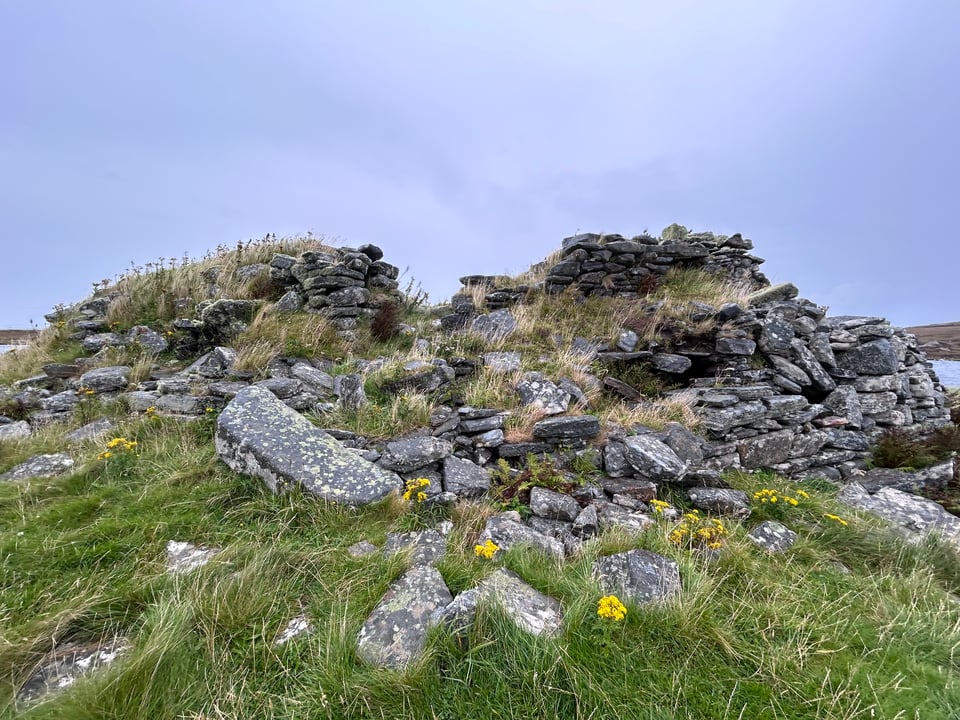
Dun an Sticir is a broch in North Uist, located in the middle of a loch and connected to two other islands via ancient stone causeways. A broch is a kind of stone tower built in the Iron Age as a shelter and modestly defensible storage structure for goods and livestock. I say “modestly” because there’s a false notion that brochs served a kind of Iron Age fortress, even though evidence points to their having served as something closer to high-status barns.
Brochs were easily one of the most impressive structures of the Iron Age skyline, tapering drystone towers rising above the landscape. They were outfitted with concentric walls for stability, and dozens of brochs survive in Scotland today, mostly in the West and Northeast (especially on Orkney) although many have fallen into disrepair, and some, like Swandro, are threatened by coastal erosion.
I first learned about brochs from an archaeology podcast. I knew there were brochs in North and South Uist from the excellent archaeology app Uist Unearthed, so when I visited Uist last year, I made sure to see Dun an Sticir.

I had been to Stonehenge earlier that month, and I had been struck how mediated the experience was, with tourists unable to walk among the stones. The walk through the neolithic landscape of barrows around the henges was a freer experience and more primal experience. I wanted to visit Dun an Sticir to come up close and personal with an Iron Age site—in Scotland this time.
Dun an Sticir was my pilgrimage destination, you might say—it may not have any religious significance, but I wanted an experience you just can’t get in North America, at least if you’re of European descent: to see ancient structures on the land your ancestors lived on.
Dun an Sticir, or the Fortress of the Skulker, is not the original name of the fort but one that was applied to it around the 1580s. Hugh MacDonald of Sleat, factor of North Uist (he worked for the landlord) conspired to murder his cousin, Donald Gorm of the MacDonalds of Sleat. When his plan was exposed, he hid—or “skulked”—in the broch to evade the authorities and was eventually found, taken, and starved to death in a castle on the Isle of Skye.
Today, the broch doesn’t look like it would do very well at hiding anybody, but in the day, it might have looked more formidable. The existing structure is partly the original broch and partly a later fort built on the same site, using the same stones.
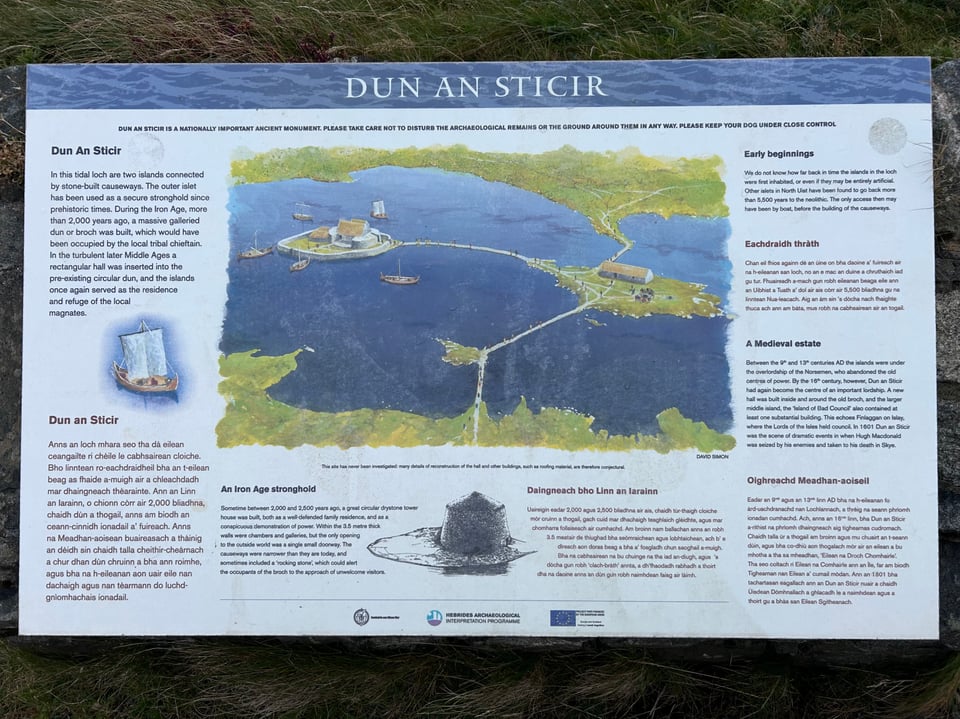
Visitors are allowed to cross the stone causeway to set foot on the three islands that make up Dun an Sticir. However, there was an advisory to exercise caution—or not attempt the crossing—if there was flooding. As it happens, it was raining when I visited, and the loch was swollen. However, the current did not seem strong to me, and I decided that if I didn’t make the attempt, I would possibly never get the chance to make the crossing.
Foolishly or not, I waded. I left my pack, shoes, and socks on the shore and rolled up my waterproof trousers, setting foot on the drystone causeway. The stones were not mortared of course, so the stones tipped back and forth where I stepped on them. It would have been very easy to slip and fall into the loch, so I kept a low centre of gravity, moving at a crouch, studying each step before committing, wondering if I was being brave or foolish.
It was quite an arduous process, but in the back of my head was The Old Ways by Robert Macfarlane, a book about walking ancient tracks that I listened to as an audiobook. I was thinking about it as I walked the ancient cursus at Stonehenge, and I was thinking about it now. How many ancient people had walked this causeway before me? Who had first laid these flagstones down?
I attained the first island, relaxed a little, and then saw the Uist Unearthed sign for activating the AR on the second, larger island. My feet were cold but numb, the grass soft underfoot. I had a feeling like being on sacred land, in a temple to the past. I decided that if I’d come this far, I could go farther.
I attained the second island, then set out along the longest track, the one that would take me to the broch itself. It was arduous and a little frightening, but I took it step by step. I realized too late that I hadn’t told Catriona what I was going to do, and that I probably wasn’t playing this quite as safe as I should have been.
When I reached the broch, I walked around it and took pictures of the brilliant moss growing on every stone, trying to imagine Hugh MacDonald using this place as a hideout. Swans were floating on the water. The island felt like a space isolated from the normal stream of time, a gateway to the otherworld. The broch had been reclaimed by nature, yet the presence of the people who had lived here survived as an uncanny echo.
Eventually, I returned the way I had come, earning a few scratches on my ankle for my trouble. Several times, my foot slipped on the slick stones and were nearly crushed between them. If I’d taken a worse step, I might have rolled my ankle or crushed a toe, with consequences for the rest of my journey, but fortunately, though I earned my scratches, I came out all right—though Catriona rightly called me crazy when I returned to the car!

I’m very sensitive toward the necessity of preserving cultural heritage and archaeological sites, so I blush in embarrassment at thinking I might have shifted a stone on the causeway or otherwise disturbed the site. But I also think about how Scotland’s right to roam—and the information on Uist Unearthed—grants permission to follow these tracks. I crossed the causeway barefoot, which would have been less damaging than wearing shoes, and padded around the island, so I think I was as respectful as I could have been, if not quite putting safety first. It was a risk, and one that paid off for me. Yet, one has to exercise their own judgment on such things and accept the risks.
Appearances: September 7th and September 21st (the big launch!)
I will be reading “Dun an Sticir” at the Accent Open Mic on September 7th at La Marche à Côté. The event begins at 8pm. Note that these open mics have a tendency to go past 11pm.
The launch for Pilgrimages (and my poet friend Kirsten Shute’s Fan Fiction is for Teenage Girls) is exactly two weeks later on September 21, at the same place and time.
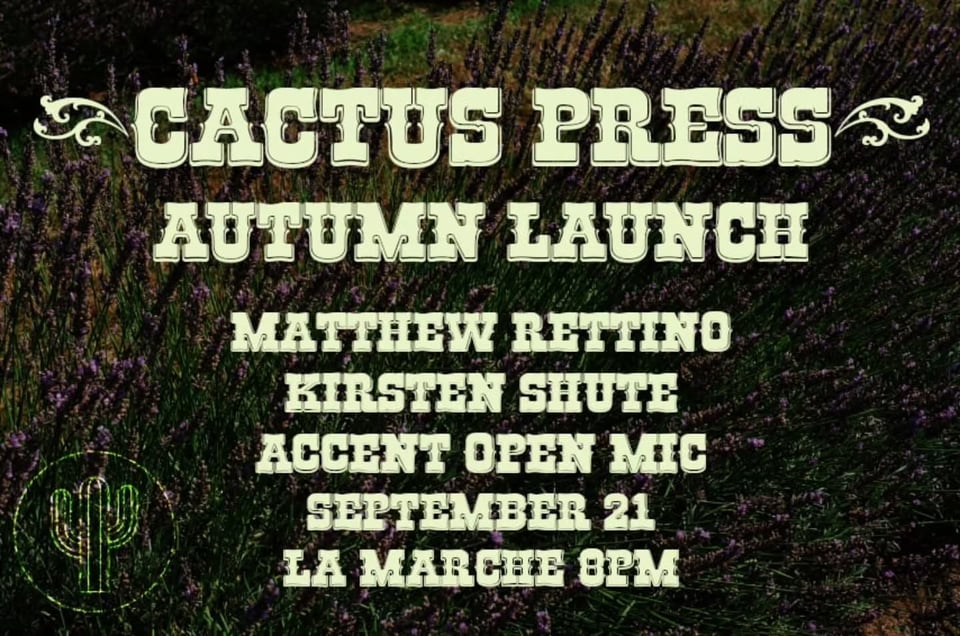
Archaeology of Weird Fiction Challenge
Every Monday I post a new reflection on a weird tale in Ann and Jeff VanderMeer’s The Weird: A Compendium of Strange and Dark Stories.
You can follow me on my journey through weird fiction by reading along to the free texts linked below. I also advise buying the anthology from a local bookstore if you can!
Last week’s story was Jeffrey Ford’s “The Delicate,” a classic Ford weird tale, a vampire story written in ornate, quasi-Victorian prose. The Delicate is a beautiful creature, its form more artwork than fangs or claw, but do not let appearances seduce you. The story is just as much about how society reacts to the monster (and remembers it, or doesn’t, after) as much as it is about the monster itself.
Ford was my introduction to weird fiction. I attended the World Fantasy Convention in 2015 sharing a hotel room with Usman Malik, who had the kindness to show me around, gushing about his favourite horror authors. This is how I learned about Undertow and Small Beer Press, and it was the weekend I picked up Ford’s A Natural History of Hell, which blew me away.
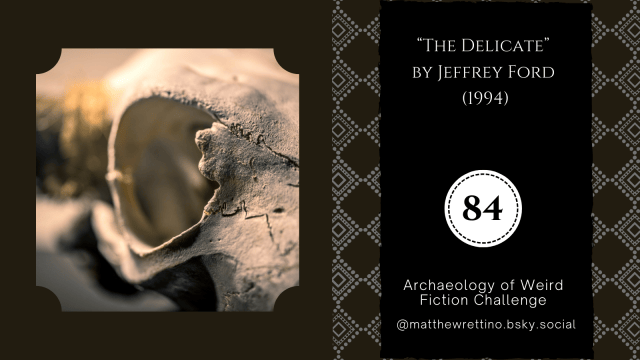
This week’s weird fiction author is none other than Stephen King. His story “The Man in the Black Suit” is about a child’s fishing trip and his chilling encounter with the devil. You can read “The Man in the Black Suit” for free.
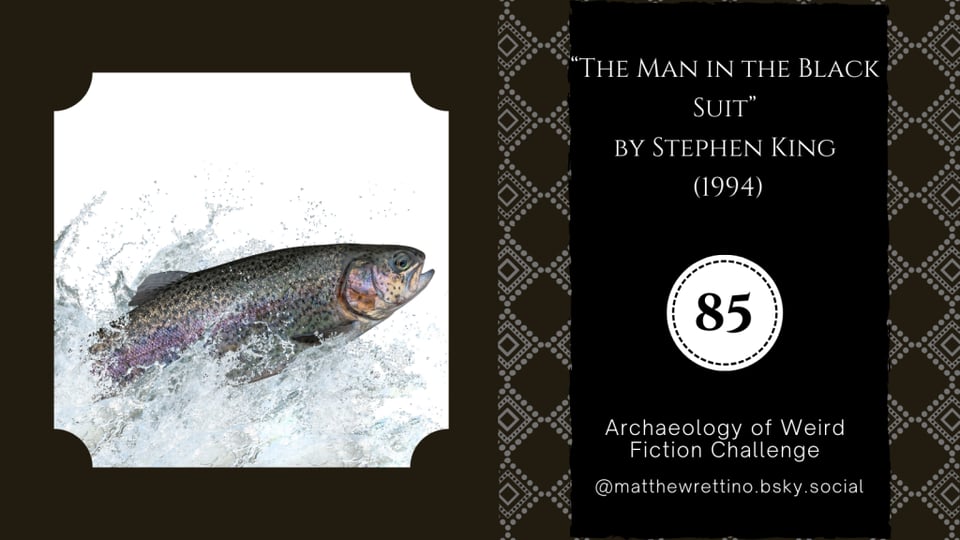
By the way, the latest horror thing Usman Malik has been gushing about is The End of the World as We Know It, an anthology of horror stories he’s been published in all based on Stephen King’s The Stand.
Writing Prompt
Describe a setting in your story using all five senses: touch, hearing, taste, sight, and smell. Then invoke the sixth sense, a feeling of presence. Who does the point of view character sense nearby? Are they people they can see or people they know? Imagine that they feel the presence of someone who has been gone for at least two hundred years. What elements of the setting seem to conjure up this awareness of presence?
Now write another description of the same setting but set two hundred years or more in the past. What is the same about the setting? What has changed? Did the person whose presence your character sensed exist back then and if so, what did they see, hear, touch feel, or smell?